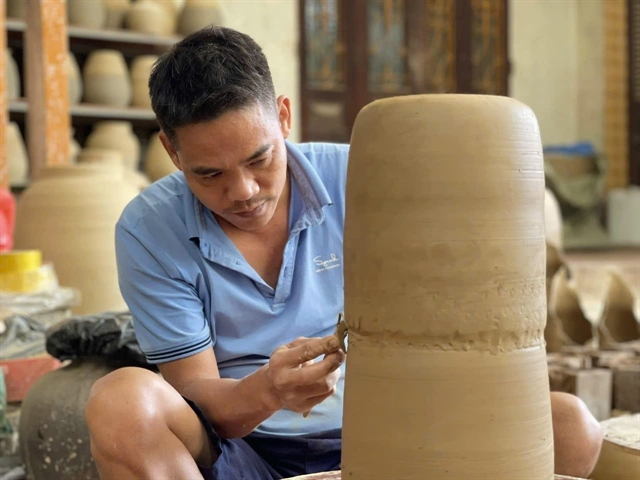Việt Nam’s handicraft has emerged as one of the country’s top ten high-value export products with presence in 163 countries and territories, heard a trade forum in Hà Nội on Friday.

HÀ NỘI — Việt Nam’s handicraft has emerged as one of the country’s top ten high-value export products with presence in 163 countries and territories, heard a trade forum in Hà Nội on Friday.
The forum was part of the three-day OCOP (One Commune, One Product) Export Products Fair (OCOPEX) taking pace in Hà Nội to Sunday.
The success in penetrating demanding markets including the EU, the US, Japan and South Korea shows the growing adaptability and integration capacity of the handicraft industry, Deputy Director of the Việt Nam Trade Promotion Agency under the Ministry of Industry and Trade Lê Hoàng Tài said.
The industry, however, faces challenges, including increasingly stringent global requirements on product quality, traceability, labour standards, environment and social responsibility. It also encounters growing fierce competition from countries with mature handicraft ecosystems such as Thailand, India, Indonesia and Peru.
The rising non-tariff barriers and technical standards also require constant innovation for Vietnamese exporters to maintain competitiveness, he said.
Hải said that trade promotion would be enhanced together with support to enable producers to participate in major global trade shows like Ambiente (Germany), Maison & Objet (France), Global Sources (Hong kong) to expand exports. Suport also includes market insights, technical barrier warnings and consumer trend updates.
Digital tool and platforms will also be deployed to help enterprises expand their online presence and approach global buyers, he said, adding Vietnamese handicraft products will be integrated with Vietnamese cultural and traditional value and global standards.
Trịnh Quốc Đạt, president of Việt Nam Association of Craft Villages, said that the handicraft industry has issued a number of solutions to develop sustainably, including the planning of raw material areas, origin certification as well as incentives to encourage young artisans, innovation and eco-friendly practices.
He also urged greater access to finance and preferential credit for handicraft producers.
Nguyễn Ánh Dương, deputy director of the Department of Industry and Trade of Hà Nội where is home to more than 1,000 craft villages, said that local handicrafts not only preserve cultural identity but also earn strong foothold in the international markets.
However, the handicraft industry needs to establish a sustainable value chain, from raw material, to trade promotion and export to develop sustainably in a fast-changing market. — VNS





